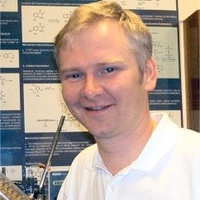
BSc, PhD (KC, London)
Chair in Pharmaceutical Industrial Chemistry
- About
-
- Email Address
- j.storey@abdn.ac.uk
- Telephone Number
- +44 (0)1224 272926
- Office Address
- Meston Room G106
- School/Department
- School of Natural and Computing Sciences
External Memberships
Head Chemist for TauRx Therapeutics
- Research
-
Research Overview
Free Radical Chemistry, Organic Methodology, Medicinal Chemistry
Our ability as organic chemists to develop new drugs to combat various diseases depends critically on understanding the behaviour of molecules and using this knowledge to prepare molecules efficiently. It is probably true to say that organic chemistry has reached a point where most molecules can be synthesised given sufficient resources. However, we are far from the position where this can be routinely accomplished in an efficient, atom economical, stereocontrolled and environmentally friendly manner. The major focus of my research effort is, therefore, the development of new synthetic methods and strategies in an attempt to meet some of these shortfalls.
An area that we are particularly interested in is the use of free radical reactions. Radical reactions offer the synthetic organic chemist a number of advantages, which include mild reaction conditions, high levels of regio control and significant functional group tolerance without the need to use protecting groups. We are interested in developing new methods of conducting radical reactions, the use of radical reactions in new bond forming processes and the use of radicals for the synthesis of biologically active compounds of medicinal significance.
Other research areas within the group include mechanistic studies in a variety of reactions, sugar chemistry with a view to the synthesis of biologically active fused carbosugars and tandem bond forming reaction protocols using organochromium compounds. We are also involved in a number of collaborative projects with the medical faculty.
Current Research
Selected Current Projects
- Synthesis of biologically active fused pyridine, pyrimidine and pteridine heterocycles via radical translocation followed by cyclisation.
- A protecting group strategy for the synthesis of C-glycosides, disaccharides and fused carbosugars.
- Iodine atom transfer cyclisation as a route to a range of heterocyclic systems of biological significance.
- New methods of conducting and mediating radical reactions with an emphasis on the development of environmentally friendly systems.
- The use of organic molecules as asymmetric catalysts.
Â
- Teaching
-
Teaching Responsibilities
Professor Storey teaches in the following courses:Â
- CM1010
- CM1011
- CM4017/CM3024 Honours/Advanced Chemistry
- CM5003 MChem Chemistry Applications
Â
- Publications
-
Page 16 of 16 Results 151 to 153 of 153
4-(3-Allyloxy-2-bromophenoxy)but-2-enenitrile
Acta Crystallographica Section E: Structure Reports Online, vol. 60Contributions to Journals: Articles- [ONLINE] DOI: https://doi.org/10.1107/S1600536804020677
5-(Bis(cyclopropenecarbonyl)aminol-4,6-dichloro-pyrimidine containing a short cyclopropyl C-H...O interaction
Acta Crystallographica Section E: Structure Reports Online, vol. E60, pp. o1110-o1112Contributions to Journals: Articles- [ONLINE] DOI: https://doi.org/10.1107/S1600536804012577
Diethyl 9,10-endo-ethano-9,10-dihydroanthracene-11,11-dicarboxylate
Acta Crystallographica Section E: Structure Reports Online, vol. E60, pp. o1081-o1083Contributions to Journals: Articles- [ONLINE] DOI: https://doi.org/10.1107/S1600536804012279
